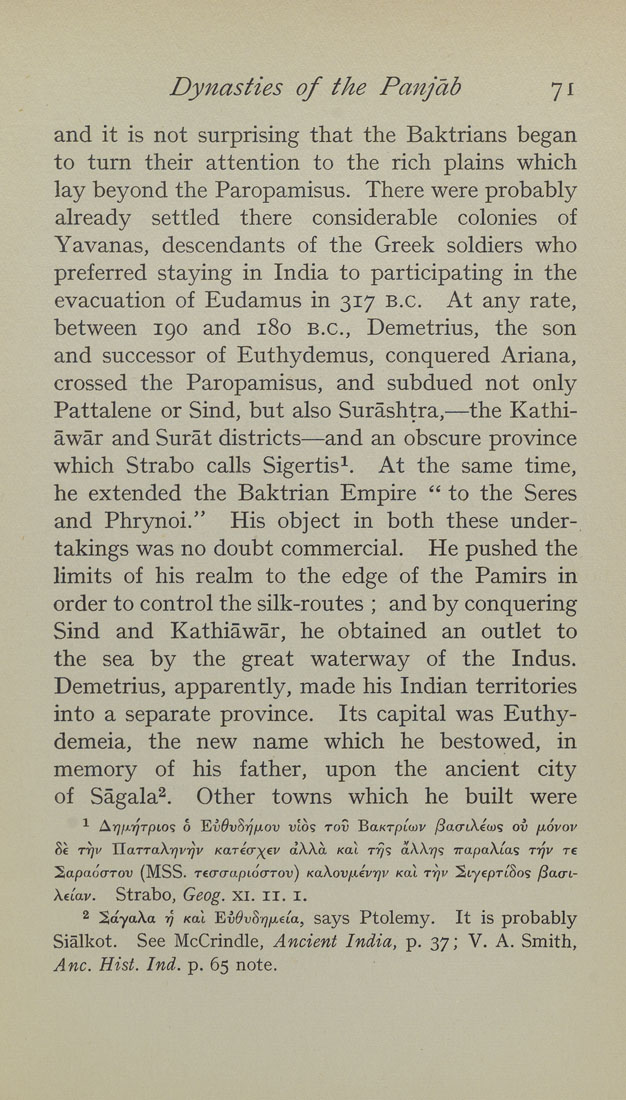Dynasties of the Panjab 71
and it is not surprising that the Baktrians began
to turn their attention to the rich plains which
lay beyond the Paropamisus. There were probably
already settled there considerable colonies of
Yavanas, descendants of the Greek soldiers who
preferred staying in India to participating in the
evacuation of Eudamus in 317 B.C. At any rate,
between 190 and 180 B.C., Demetrius, the son
and successor of Euthydemus, conquered Ariana,
crossed the Paropamisus, and subdued not only
Pattalene or Sind, but also Surashtra,—the Kathi¬
awar and Surat districts—and an obscure province
which Strabo calls Sigertis^. At the same time,
he extended the Baktrian Empire " to the Seres
and Phrynoi." His object in both these under¬
takings was no doubt commercial. He pushed the
limits of his realm to the edge of the Pamirs in
order to control the silk-routes ; and by conquering
Sind and Kathiawar, he obtained an outlet to
the sea by the great waterway of the Indus.
Demetrius, apparently, made his Indian territories
into a separate province. Its capital was Euthy-
demeia, the new name which he bestowed, in
memory of his father, upon the ancient city
of Sagala^. Other towns which he built were
^ Ary/AT^rpios 6 YjvQv'^r]p.ov utos rov BaKT/atojv /^acrtXecos ov fiovov
§€ Tr]v TlaTTaXyjvi^v KaTe(T)(ev dXXd Kal rrj'; aXXrj<; vapaXias ttjv re
^apaoarov (MSS. recraapLocTTov) KaXovf-Uvriv kol ttjv StyeprtSo? fSacn-
Xuav. Strabo, Geog. xi. ii. i.
2 :SayaXa ry /cat EvOv87jfj1.ua, says Ptolemy. It is probably
Sialkot. See McCrindle, Ancient India, p. 37; V. A. Smith,
Anc. Hist. Ind. p. 65 note.
|








